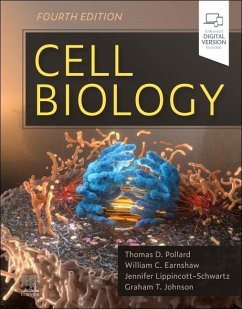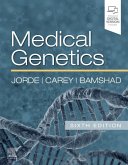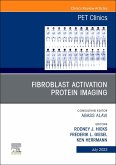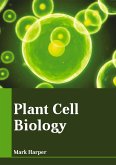Thomas D. Pollard (Sterling Professor, Department of Molecular, Cel, William C. Earnshaw (Professor and Wellcome Trust Principal Researc, Jennifer Lippincott-Schwartz (Howard Hughes Medical I Group Leader
Cell Biology
Thomas D. Pollard (Sterling Professor, Department of Molecular, Cel, William C. Earnshaw (Professor and Wellcome Trust Principal Researc, Jennifer Lippincott-Schwartz (Howard Hughes Medical I Group Leader
Cell Biology
- Gebundenes Buch
- Merkliste
- Auf die Merkliste
- Bewerten Bewerten
- Teilen
- Produkt teilen
- Produkterinnerung
- Produkterinnerung
Revised edition of: Cell biology / Thomas D. Pollard. 3rd ed. Ã2017.
Andere Kunden interessierten sich auch für
![Histology and Cell Biology: An Introduction to Pathology Histology and Cell Biology: An Introduction to Pathology]() Abraham L. Kierszenbaum (Emeritus Medical (Clinical) The ProfessorHistology and Cell Biology: An Introduction to Pathology86,99 €
Abraham L. Kierszenbaum (Emeritus Medical (Clinical) The ProfessorHistology and Cell Biology: An Introduction to Pathology86,99 €![Medical Genetics Medical Genetics]() Lynn B. Jorde (Mark Professor and Kathie Miller Presidential ChairMedical Genetics74,99 €
Lynn B. Jorde (Mark Professor and Kathie Miller Presidential ChairMedical Genetics74,99 €![Fibroblast Activation Protein Imaging, An Issue of PET Clinics Fibroblast Activation Protein Imaging, An Issue of PET Clinics]() Fibroblast Activation Protein Imaging, An Issue of PET Clinics71,99 €
Fibroblast Activation Protein Imaging, An Issue of PET Clinics71,99 €![Plant Cell Biology Plant Cell Biology]() Plant Cell Biology78,99 €
Plant Cell Biology78,99 €![BRS Cell Biology & Histology BRS Cell Biology & Histology]() Gartner, Leslie P., PhDBRS Cell Biology & Histology57,99 €
Gartner, Leslie P., PhDBRS Cell Biology & Histology57,99 €![Heme Oxygenase in Biology and Medicine Heme Oxygenase in Biology and Medicine]() Nader G. Abraham (Hrsg.)Heme Oxygenase in Biology and Medicine153,99 €
Nader G. Abraham (Hrsg.)Heme Oxygenase in Biology and Medicine153,99 €![Multiple Myeloma Multiple Myeloma]() Ross D. Brown / P. Joy Ho (eds.)Multiple Myeloma112,99 €
Ross D. Brown / P. Joy Ho (eds.)Multiple Myeloma112,99 €-
-
-
Produktdetails
- Produktdetails
- Verlag: Elsevier - Health Sciences Division
- 4 ed
- Seitenzahl: 944
- Erscheinungstermin: 28. Februar 2023
- Englisch
- Abmessung: 282mm x 224mm x 34mm
- Gewicht: 2090g
- ISBN-13: 9780323758000
- ISBN-10: 0323758002
- Artikelnr.: 64525341
- Herstellerkennzeichnung
- Libri GmbH
- Europaallee 1
- 36244 Bad Hersfeld
- gpsr@libri.de
- Verlag: Elsevier - Health Sciences Division
- 4 ed
- Seitenzahl: 944
- Erscheinungstermin: 28. Februar 2023
- Englisch
- Abmessung: 282mm x 224mm x 34mm
- Gewicht: 2090g
- ISBN-13: 9780323758000
- ISBN-10: 0323758002
- Artikelnr.: 64525341
- Herstellerkennzeichnung
- Libri GmbH
- Europaallee 1
- 36244 Bad Hersfeld
- gpsr@libri.de
Thomas Dean Pollard is a prominent educator, cell biologist and biophysicist whose research focuses on understanding cell motility through the study of actin filaments and myosin motors. He is Sterling Professor of Molecular, Cellular & Developmental Biology and a Professor of Cell Biology and Molecular Biophysics & Biochemistry at Yale University. He was Dean of Yale's Graduate School of Arts and Sciences from 2010 to 2014, and President of the Salk Institute for Biological Studies from 1996 to 2001. Pollard is very active in promoting scientific education and research primarily through two major societies, both of which he is a past President: the American Society for Cell Biology and the Biophysical Society
SECTION I Introduction to Cell Biology
1. Cells as the Basis of Life on Earth
2. Evolution of Life on Earth
SECTION II Chemical and Physical Background
3. Molecules: Structures and Dynamics
4. Biophysical Principles
5. Macromolecular Assembly
6. Research Strategies
SECTION III Chromatin, Chromosomes, and the Cell Nucleus
7. Chromosome Organization
8. DNA Packaging in Chromatin and Chromosomes
9. Nuclear Structure and Dynamics
SECTION IV Central Dogma: From Gene to Protein
10. Gene Expression
11. Eukaryotic RNA Processing
12. Protein Synthesis and Folding
SECTION V Membrane Structure and Function
13. Membrane Structure and Dynamics
14. Membrane Pumps
15. Membrane Carriers
16. Membrane Channels
17. Membrane Physiology
SECTION VI Cellular Organelles and Membrane Trafficking
18. Posttranslational Targeting of Proteins
19. Mitochondria, Chloroplasts, Peroxisomes
20. Endoplasmic Reticulum
21. Mechanisms of Vesicular Transport
22. Secretory Membrane System and Golgi Apparatus
23. Endocytosis and the Endosomal Membrane System
24. Processing and Degradation of Cellular Components
SECTION VII Signaling Mechanisms
25. Plasma Membrane Receptors
26. Protein Hardware for Signaling
27. Second Messengers
28. Integration of Signals
SECTION VIII Cellular Adhesion and the Extracellular Matrix
29. Cells of the Extracellular Matrix and Immune Systems of Animals
30. Extracellular Matrix Molecules
31. Cellular Adhesion
32. Intercellular Junctions
33. Connective Tissues
SECTION IX Cytoskeleton and Cellular Motility
34. Actin and Actin-Binding Proteins
35. Microtubules and Centrosomes
36. Intermediate Filaments
37. Motor Proteins
38. Intracellular Motility
39. Cellular Motility
40. Muscles
SECTION X Cell Cycle
41. Introduction to the Cell Cycle
42. G1 Phase and Regulation of Cell Proliferation,
43. S Phase and DNA Replication
44. G2 Phase: Responses to DNA Damage and Control of Entry Into Mitosis
45. Mitosis
46. Cytokinesis
47. Meiosis
48. Cell Death
1. Cells as the Basis of Life on Earth
2. Evolution of Life on Earth
SECTION II Chemical and Physical Background
3. Molecules: Structures and Dynamics
4. Biophysical Principles
5. Macromolecular Assembly
6. Research Strategies
SECTION III Chromatin, Chromosomes, and the Cell Nucleus
7. Chromosome Organization
8. DNA Packaging in Chromatin and Chromosomes
9. Nuclear Structure and Dynamics
SECTION IV Central Dogma: From Gene to Protein
10. Gene Expression
11. Eukaryotic RNA Processing
12. Protein Synthesis and Folding
SECTION V Membrane Structure and Function
13. Membrane Structure and Dynamics
14. Membrane Pumps
15. Membrane Carriers
16. Membrane Channels
17. Membrane Physiology
SECTION VI Cellular Organelles and Membrane Trafficking
18. Posttranslational Targeting of Proteins
19. Mitochondria, Chloroplasts, Peroxisomes
20. Endoplasmic Reticulum
21. Mechanisms of Vesicular Transport
22. Secretory Membrane System and Golgi Apparatus
23. Endocytosis and the Endosomal Membrane System
24. Processing and Degradation of Cellular Components
SECTION VII Signaling Mechanisms
25. Plasma Membrane Receptors
26. Protein Hardware for Signaling
27. Second Messengers
28. Integration of Signals
SECTION VIII Cellular Adhesion and the Extracellular Matrix
29. Cells of the Extracellular Matrix and Immune Systems of Animals
30. Extracellular Matrix Molecules
31. Cellular Adhesion
32. Intercellular Junctions
33. Connective Tissues
SECTION IX Cytoskeleton and Cellular Motility
34. Actin and Actin-Binding Proteins
35. Microtubules and Centrosomes
36. Intermediate Filaments
37. Motor Proteins
38. Intracellular Motility
39. Cellular Motility
40. Muscles
SECTION X Cell Cycle
41. Introduction to the Cell Cycle
42. G1 Phase and Regulation of Cell Proliferation,
43. S Phase and DNA Replication
44. G2 Phase: Responses to DNA Damage and Control of Entry Into Mitosis
45. Mitosis
46. Cytokinesis
47. Meiosis
48. Cell Death
SECTION I Introduction to Cell Biology
1. Cells as the Basis of Life on Earth
2. Evolution of Life on Earth
SECTION II Chemical and Physical Background
3. Molecules: Structures and Dynamics
4. Biophysical Principles
5. Macromolecular Assembly
6. Research Strategies
SECTION III Chromatin, Chromosomes, and the Cell Nucleus
7. Chromosome Organization
8. DNA Packaging in Chromatin and Chromosomes
9. Nuclear Structure and Dynamics
SECTION IV Central Dogma: From Gene to Protein
10. Gene Expression
11. Eukaryotic RNA Processing
12. Protein Synthesis and Folding
SECTION V Membrane Structure and Function
13. Membrane Structure and Dynamics
14. Membrane Pumps
15. Membrane Carriers
16. Membrane Channels
17. Membrane Physiology
SECTION VI Cellular Organelles and Membrane Trafficking
18. Posttranslational Targeting of Proteins
19. Mitochondria, Chloroplasts, Peroxisomes
20. Endoplasmic Reticulum
21. Mechanisms of Vesicular Transport
22. Secretory Membrane System and Golgi Apparatus
23. Endocytosis and the Endosomal Membrane System
24. Processing and Degradation of Cellular Components
SECTION VII Signaling Mechanisms
25. Plasma Membrane Receptors
26. Protein Hardware for Signaling
27. Second Messengers
28. Integration of Signals
SECTION VIII Cellular Adhesion and the Extracellular Matrix
29. Cells of the Extracellular Matrix and Immune Systems of Animals
30. Extracellular Matrix Molecules
31. Cellular Adhesion
32. Intercellular Junctions
33. Connective Tissues
SECTION IX Cytoskeleton and Cellular Motility
34. Actin and Actin-Binding Proteins
35. Microtubules and Centrosomes
36. Intermediate Filaments
37. Motor Proteins
38. Intracellular Motility
39. Cellular Motility
40. Muscles
SECTION X Cell Cycle
41. Introduction to the Cell Cycle
42. G1 Phase and Regulation of Cell Proliferation,
43. S Phase and DNA Replication
44. G2 Phase: Responses to DNA Damage and Control of Entry Into Mitosis
45. Mitosis
46. Cytokinesis
47. Meiosis
48. Cell Death
1. Cells as the Basis of Life on Earth
2. Evolution of Life on Earth
SECTION II Chemical and Physical Background
3. Molecules: Structures and Dynamics
4. Biophysical Principles
5. Macromolecular Assembly
6. Research Strategies
SECTION III Chromatin, Chromosomes, and the Cell Nucleus
7. Chromosome Organization
8. DNA Packaging in Chromatin and Chromosomes
9. Nuclear Structure and Dynamics
SECTION IV Central Dogma: From Gene to Protein
10. Gene Expression
11. Eukaryotic RNA Processing
12. Protein Synthesis and Folding
SECTION V Membrane Structure and Function
13. Membrane Structure and Dynamics
14. Membrane Pumps
15. Membrane Carriers
16. Membrane Channels
17. Membrane Physiology
SECTION VI Cellular Organelles and Membrane Trafficking
18. Posttranslational Targeting of Proteins
19. Mitochondria, Chloroplasts, Peroxisomes
20. Endoplasmic Reticulum
21. Mechanisms of Vesicular Transport
22. Secretory Membrane System and Golgi Apparatus
23. Endocytosis and the Endosomal Membrane System
24. Processing and Degradation of Cellular Components
SECTION VII Signaling Mechanisms
25. Plasma Membrane Receptors
26. Protein Hardware for Signaling
27. Second Messengers
28. Integration of Signals
SECTION VIII Cellular Adhesion and the Extracellular Matrix
29. Cells of the Extracellular Matrix and Immune Systems of Animals
30. Extracellular Matrix Molecules
31. Cellular Adhesion
32. Intercellular Junctions
33. Connective Tissues
SECTION IX Cytoskeleton and Cellular Motility
34. Actin and Actin-Binding Proteins
35. Microtubules and Centrosomes
36. Intermediate Filaments
37. Motor Proteins
38. Intracellular Motility
39. Cellular Motility
40. Muscles
SECTION X Cell Cycle
41. Introduction to the Cell Cycle
42. G1 Phase and Regulation of Cell Proliferation,
43. S Phase and DNA Replication
44. G2 Phase: Responses to DNA Damage and Control of Entry Into Mitosis
45. Mitosis
46. Cytokinesis
47. Meiosis
48. Cell Death








